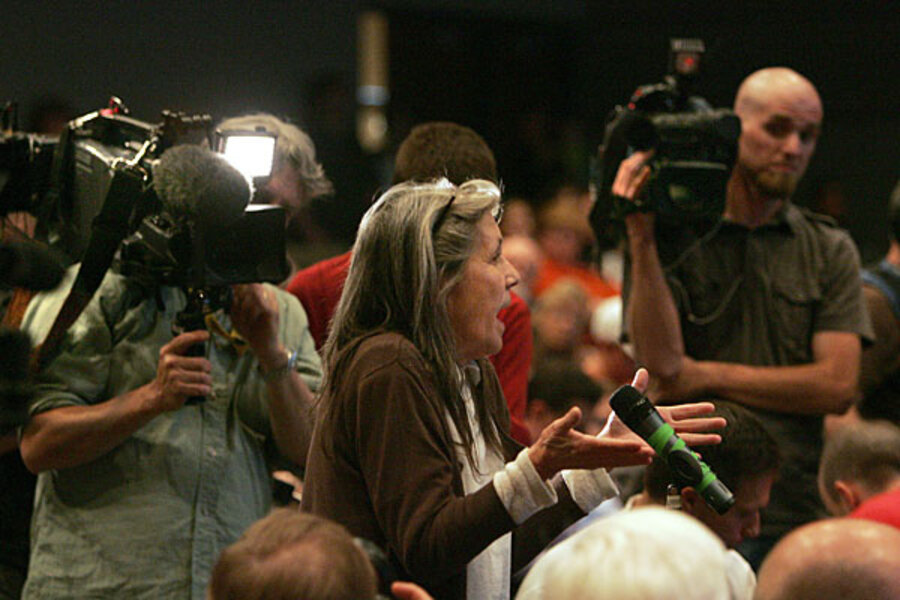Wisconsin sonic booms: Is a 1.5-magnitude jiggle the whole story?
| Chicago
The mystery to what is keeping residents of Clintonville, Wis., awake at night is solved. Sort of.
The US Geological Survey reported Thursday that a 1.5-magnitude earthquake jiggled the area in northeast Wisconsin at 12:15 a.m. Tuesday, which the agency said would be enough to set off the sounds described as underground fireworks or thunder by many of the city’s 4,500 residents.
Despite its low magnitude, it is not uncommon that earthquakes of its size are heard in addition to being felt, says USGS Geophysicist John Bellini in Golden, Colo. All earthquakes generate seismic energy that can move through the earth’s surface at thousands of miles per hour, creating a loud boom.
Mr. Bellini says the earthquake is responsible for a single boom that lasted one or two seconds, making it likely that the series of booms heard over several days in Clintonville were caused by a series of smaller earthquakes than the one recorded.
“We can assume that there were others that were smaller than this one,” he says.
Clintonville received international attention earlier this week when reports broke that many in the town were awoken by loud sonic booms coming from below the surface of the earth.
While the noises have subsided since they were first reported early Monday morning, many have continued each night through Thursday. Dozens of residents have complained that the sounds have triggered cracks in their walls and floors and are responsible for rattling dishes.
Public meetings were held Wednesday and Thursday to relay information to residents and take down their stories. The Clintonville city administrator, Lisa Kuss, said the earthquake explanation is not conclusive because “in other places in the United States, a 1.5 earthquake would not be felt.”
On the other hand, Ms. Kuss added, one possibility that makes Clintonville an exception is that “the type of rock that Wisconsin has transmits seismic energy very well.”
Steve Dutch, a geologist at the University of Wisconsin at Green Bay, agrees that it is “certainly possible” that the underground noises are related to an earthquake, but says an earthquake of its magnitude would only produce noise “equivalent to 10 pounds of high explosives.”
And because the sounds would take place at such a significant depth, Mr. Dutch adds, it is likely they “would be muffled.”
“The fact that the people are hearing bangs and sharp noises at such high frequency suggests [the sounds] are really close to the surface,” he says.
One possibility he is proposing is that a dry winter is causing the earth’s underground water table to dry up, causing granite rocks to settle into the gaps, creating the loud noise.
On Thursday the city hired an engineering firm in Waukesha to study the earth’s surface at different points of the city. An online map hosted on the city’s website traces the locations of the emergency calls dating back to Monday. Dutch says he plans to plot the phone calls to create a map that may determine patterns in where and when the sounds took place.
Bellini of USGS says that, while it is uncommon for Wisconsin to get earthquakes, it is not unprecedented. The most powerful earthquake to hit the state was in 1947 when a 4.0-magnitude tremor affected over 3,000 square miles in the southwest region of the state.





